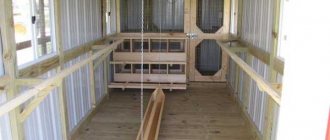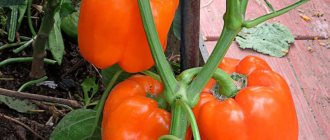Seed preparation
Let's start by preparing our seeds for sowing. Tomato seeds are usually small. They remain similar for up to 10 years. First of all, you need to start disinfecting the seeds. Prepare the following solution: 0.3-0.5% solution of potassium permanganate (3-5 g per liter of water). And put the seeds in a gauze cloth, wrap the gauze, and put it in the solution for 0.5 hours. This is how the seeds are disinfected and all surface infection is killed.
After this, we wash the seeds in running water, and then we can do as we please. You can germinate seeds in any growth stimulants; for this we use either aloe juice or wood ash. After that washing under running water, we can keep the seeds in wood ash for half a day. Leave until the seeds germinate, and then proceed to sowing.
We plant in containers with a depth of at least 4-5 cm, we can sow tomatoes directly in the pot. We prepare the soil for preparing and growing seedlings very carefully. It is better to put 100-120 grams per bucket of soil. dolomite flour, 50 grams of any complex fertilizer or 1 tbsp. superphosphate and 1 tbsp. potassium nitrate or potassium sulfate. Mix everything thoroughly, pour water on it so that the soil is always moist. And after that we start sowing.
Design features of a lean-to greenhouse
As in other similar structures, in a lean-to greenhouse you can install racks for flower pots, or you can add soil beds for vegetable crops. It differs in its design: it has only one slope, due to which the walls are of different heights. Such a structure is usually located with one wall facing a hill or attached to the wall of a house or fence.
Advantages
A lean-to greenhouse has a number of significant advantages.
- These include:
- compact design, especially wall-mounted, which allows rational use of space on a small plot of land;
- economy, because for a structure near the main wall of a house, less building materials are needed;
- it is easier to carry out communications from the house (electricity, water);
- the pitched roof does not retain precipitation (rain, snow);
- easy to heat due to proximity to the heated house and small space;
- reliability due to fastening to the main wall;
- protection by the wall of the house from strong winds and frosts;
- saving time, because a single-pitch structure is assembled faster than a gable structure.
Flaws
- It is worth mentioning the disadvantages of such a structure:
- lack of usable space for tall cucumber and tomato bushes, more suitable for growing seedlings with subsequent replanting to a permanent place;
- the wall of the house blocks sunlight on one side;
- construction near a residential building must be carried out carefully so as not to damage communications.
Did you know? Residents of many northern countries add greenhouses to their homes. This is not only economical and practical, but also beautiful, because you can go into the greenhouse at any time and relax there surrounded by plants and flowers.
Sowing
We take a container with drainage holes, put in the prepared soil, water it with hot water and a solution of potassium permanganate, and then make shallow grooves of 5 mm. depth at a distance of 3-4 cm, from each other. In this container we made 3 grooves, and after that we laid out the seeds. We place the seeds at a distance of 0.5 cm, without deepening them and not too close to the surface. Half a centimeter is the optimal depth for sowing tomato seeds for seedlings.
After sowing, the seeds can be covered with moist soil, but it is better to do this: add sand to the soil and cover it evenly.
Microgreenhouse
The seeds are sown and after sowing the container must be placed in a warm place at a temperature of 20-25 degrees. You can make a small microgreenhouse: take a plastic bag, place a container with seedlings in it, making sure there is air in the bag. We will get such an airy micro-greenhouse, which we will place in a warm place.
After 3-4 days, if the seeds are good and the germination energy is also good, we will have seedlings. The moment the loop appears on the sprouts is the most important in growing the first seedlings. We must remove the container from the bag and place it in the brightest place, so that the loops stretch in the light, grow faster, and the temperature must be lowered, at night to 14-15 degrees, during the day to keep it at 18 degrees. After 2-3 weeks we will have good grown plants, after which we will start picking.
When we look at a plant, we do not notice and do not know that it is at this moment, when the plant has formed 2-3 true leaves, that the tubercle of the first flower raceme is formed in the growth cone itself. A very important moment comes when we are in a hurry with sowing and sow in February or early March, then it is at this moment that the plant finds itself in unfavorable conditions, this is very insufficient illumination. And this flower tubercle will not be initiated precisely because of these conditions, but the growth of leaves will be initiated. The seedlings are elongated.
About sowing dates
When should you sow seedlings? A lot of literature has been written on how long seedlings should be kept. Some people think it’s 50, others 60 days from the beginning. But there is no need to rush at all. Seedlings that are obtained later still catch up with the previously planted seedlings, and they turn out good and strong.
Good seedlings are grown in the right light and temperature, they are compact, the leaves are closely spaced, and they have a thick stem. Containers for growing seedlings can be different, plastic bags or pots, other devices, but a prerequisite is that the volume must be at least 0.5 liters. and not very high capacity.
Picking
Tomatoes take root well, so when picking, be sure to deepen them, then the plants’ root system develops well and the stem becomes thick. In the center of the picking container you need to make a depression, place the seedling vertically, deepen it down to the cotyledon leaves, pressing the soil tightly so that there is immediate contact with the root system. The soil in the container does not reach the edges, keep about 3 cm. This was done specifically so that when growing seedlings, bedding could be made.
And then comes caring for the seedlings. If the weather is cloudy outside, then it is very good to lower the temperature to 14-15 degrees, so that the seedlings do not stretch out.
Feeding seedlings
If we have good soil, then fertilizing can be done only as needed. If we see that the plant is very pale, then this will tell us about a lack of nitrogen. You can use nitrogen fertilizers (urea, ammonium nitrate), but it is better to use a small concentration of fertilizer when watering, water not just with water, but with a small content of nutrients, based on a teaspoon of complex mineral fertilizer per 1 liter of water. Tomatoes are very responsive to phosphorus and potassium, so it is necessary to periodically extract superphosphate and fertilize with only phosphorus.
Do-it-yourself wall-mounted lean-to greenhouse
Well, now the algorithm for making a winter garden in expanded form:
Creating a working project
- We decide on the covering material. You have to choose between glass and polycarbonate, while glass will always be preferable, since you are not glazing the windows in your house with thermoplastic.
- Based on the chosen cladding, skills and available budget, we also plan the construction material. Again, it could be wood or metal. The first one is easier to process and does not impact the budget as much. The second one is reliable and looks beautiful. We would advise you to opt for a steel profile. It will be more solid than lumber, but cheaper than aluminum.
- We determine the intended purpose of the greenhouse and the desired operating load.
- Based on the previously indicated data, as well as taking into account the geometric and architectural features of the mother building and the existing site plan, we are developing a working drawing of the greenhouse, and creating a list of all the tools and materials necessary for the implementation of the planned project. Agree, discovering that you are missing something already during the construction process is unpleasant, to say the least.
Purchasing materials and clearing the site
- Having finished with the paperwork, we purchase the required quantity of building material, or better yet, even with a small supply. (+10-15% is usually enough). And we conduct an audit of the existing tool. When working with metal, electric welding, a grinder and a drill are a must!
- At the same time, we clear the construction site. It is necessary to remove all the debris from there, level out uneven areas, cut down interfering bushes, or even dismantle the blind area that has been poured around the house. Concrete is not the best flooring for a greenhouse.
Excavation
- We mark the contours of the shaped foundation and dig a trench under it, about half a meter deep and 250-350 mm wide. The main thing is that it is convenient to choose the land. Note that if we were planning a full-fledged extension, we would have to make a closed foundation and lay it at the same depth as the foundation of the mother building.
- We form a sand cushion 20 cm thick. The sand must not only be poured into the trench, but also compacted using a tamper and water. This layer will help protect the foundation from frost heaving. At the same stage, hammer into the ready-made foundation on which the wall stands, cuttings of 12-16 gauge reinforcement, having previously drilled holes for the crutches with a hammer drill.
Foundation
- If the walls of the trench are smooth and the soil in the area is dense, you can do without formwork inside the “pit”, limiting yourself to small, ten-centimeter sides above the ground level. For sandy or dusty walls, the sides should be installed from the sandy lining itself.
- We reinforce the resulting contour with the twelfth reinforcement. Two rods five centimeters from the bottom of the trench and two at the same distance from the upper border of the formwork. In this case, the step between them will remain within the permissible 400 mm.
- Having finished with the preparation, pour concrete inside the formwork of at least grade M-150, and even better grade M-200. To prepare one yourself, you need to follow the following recipe:
1:1,9:3,2
That is, for one volume of five hundredth Portland cement there are 1.9 volumes of sand and 3.2 volumes of crushed stone.
- When the foundation is strong, and this will happen no earlier than in 28 days, we remove the formwork, lay waterproofing on top of the concrete and build a brick base for our greenhouse. Most often it is laid out level with the base of the house, but not higher than 500-800 mm, especially if the plant is supposed to be planted directly into the ground.
During masonry work, do not forget to embed mortgages between the bricks, to which the frame of the future greenhouse will subsequently be welded.
Arrangement of seedlings
We take the seedlings and arrange them so that all the plants get the light and the leaves of the seedlings do not intertwine or even touch. This is necessary to provide light and warmth. This will be the best care.
The plant is growing and needs to be planted in time in the main soil - greenhouse soil from the container, because the stems can stretch out enough and even 2-3 fruits will form on one cluster, and the plant itself will spend entirely on the formation of these particular fruits. We constantly remove small stepsons. The upper stepson can be left; it forms a second stem located next to the flower stem.
When transporting to the dacha, so that the plants do not break and feel comfortable, try not to water the seedlings a few days before transportation; it is better to dry them, the stems will not be brittle and the plant will better tolerate a stressful situation.
From the middle or end of May, you can safely begin planting tomato seedlings in a film greenhouse or greenhouse. If you have a warm greenhouse, heated, and if you have a warm heated bed, using biofuel, based on plant residues, then you can start planting tomatoes in early May. It all depends on the specific greenhouse and weather conditions.
A prerequisite for good production and good fruiting is that soil and bed preparation must be carried out immediately before planting tomato seedlings. We dig up the ridge, loosen it, level it with a rake, then you need to add mineral fertilizers so that fruiting is abundant and good.
Features and how much does a 6-meter polycarbonate greenhouse cost?
The difference between such a greenhouse and a gable one is that its roof is, as it were, “halved”, that is, only one slope remains. It resembles a right triangle. Such a greenhouse is attached to a residential building , garage or other building or adjacent to a hill. This wall-mounted structure is compact, reliable and affordable . It's easier to care for.
How much does a 6 meter polycarbonate greenhouse cost ? Much depends on the presence and type of foundation, frame materials and cost of polycarbonate, as well as the height of the structure. The height is limited by the wall to which the building adjoins. It is important to remember that it is inconvenient to work in a greenhouse that is too low, and not all plants like it. There are two heights for a lean-to greenhouse: for the outer wall and for the one adjacent to the building. On average, the price is 20,000-30,000 rubles. for the entire structure.
Useful video about m long polycarbonate greenhouse costs :
In the photo are drawings of a do-it-yourself lean-to greenhouse made of polycarbonate :
Greenhouse layout
The optimal width of the bed for planting tomatoes should be 80 cm, and 40 cm between the beds. And then we proceed to applying fertilizers.
- First of all: (taking into account that the soil is mostly acidic) add dolomite flour at the rate of 100-150 g. per square meter. We pour armfuls out of the bucket; you should have rubber gloves on your hands in any case. This is an additional feeding not only with calcium, but also with magnesium.
- Secondly: The next fertilizer that a tomato needs is superphosphate. They add 50-80 grams, sometimes up to 100 grams. per square meter. Superphosphate is a sparingly soluble fertilizer, but you should not be afraid that there will be a root burn of the system, because then we will mix everything and level it out. And even if the granules are visible, do not be afraid, the plant will not get burned.
- In the 3rd turn: Then we apply complex fertilizer Kemira Universal or Nitrofoska 50 g to the soil. per square meter. if you have a little fertilizer available, you can then apply it directly into the hole.
And mix the bed thoroughly. The soil must be pre-moistened so that fertilizers dissolve well, and tomatoes love a sufficient amount of moisture, especially when planting. The soil is wet not only in the bed itself, but even between the beds, the distance, more precisely 40 cm wide, in the place where you walk, should be wet. All soil in the greenhouse must be moistened.
What is a wall greenhouse?
This is a structure connected to the wall of a residential building. Such buildings can be used all year round, since it is easier to install heating and electricity there.
Wall-mounted greenhouses are usually designed as lean-to greenhouses. They are most common due to practicality. Such structures look like a halved conventional greenhouse structure. The structures can be attached to both a solid wall and a wall with windows. It is better to build on the southern part of the building.
There are semi-arched greenhouses, which are much less common due to the inconveniences that arise during their construction. Bent elements are difficult to attach, as is stretching the film over them.
Unpractical polygonal greenhouses require more material for construction. Suitable mainly for growing flowers. Although they look very attractive.
It is advantageous to place greenhouse structures at the entrance to a residential building so that they are adjacent to one of the doors of the house. In this case, there will be a constant heat exchange between them and the interior spaces. There is an end option, when a small greenhouse is adjacent to the end wall. Moreover, its configuration can be semi-arched and polygonal, or simple lean-to.
An important point is the marking of the ridge
The feeding area of tomato plants depends on the planting scheme. And the feeding area depends on the variety, low-growing standard varieties can be planted more densely, at the rate of 4-5 plants per square meter, and tall varieties and hybrids no more than 3 plants (like cucumbers) per 1 square meter.
Let's make holes: since seedlings can also be different, they can be well grown, or they can be overgrown, then first we will mark the holes for properly grown seedlings. Let's take a medium-sized tomato variety called Garant. We make holes at a distance of 25-30 cm, dig a shovel full of bayonets and you can add wood ash into the holes, take one armful per hole, tomatoes are very fond of especially the pre-sowing application of wood ash.
In addition, tomatoes also love excess good moisture when planting. We will deliver Kemira Universal. And we’ll water it very generously, just fill the holes with water. If the seedlings are weakened, pale yellow, etc., add ash fertilizer and complex fertilizer and lightly mix everything. And after that we pour water with potassium permanganate from a watering can, an intensely colored one, it’s very good if the water is hot. The soil is also disinfected and the plant immediately falls into warm soil, it takes root very well.
- Soil cultivation: everything you need to know before sowing and after harvesting (91 photos)
- Downy mildew of cucumbers: methods for identifying the disease at an early stage and processing vegetables (79 photos)
- Cladosporiosis of tomatoes - what is it and how to fight it in greenhouses? 69 photo ideas
You don’t even have to wait for all the moisture to be absorbed, we’ve already watered it beforehand, and now we’ve watered it well with a solution of potassium permanganate, we lower the seedlings into this hole, bury it, and cover it with soil. It’s not without reason that they say that tomatoes love when their feet are damp, but their heads are always dry. This rule must always be remembered, especially when watering tomatoes, so that water does not fall on the leaves when watering.
We bury the seedlings in the hole until the first true leaves are planted and compact the soil.
If you leave for a long time after planting, to avoid evaporation, you can not water after planting, but mulch with either peat or compost. It is enough to add 1 cm of compost to prevent evaporation.
But tall varieties of tomato, hybrid tomato, of course, can be planted less frequently, at the rate of 3 plants per 1 square meter. We make holes for them of the same depth, i.e. on the bayonet of a shovel, but the distances between plants are somewhat larger, essentially the same as when planting a cucumber.
We do all the other techniques and fertilizers and watering and everything else in exactly the same way. This is Kemero and wood ash. We plant elongated and overgrown plants in holes, first remove all the leaves (one day, two days before planting) and make not a hole, but a small ditch, pour ash and some kind of complex fertilizer, mix, pour water and potassium permanganate into the ditch and proceed for landing.
We plant lying down, this technique is known to many, we don’t bury it very deeply, because the soil is cold deeper, into a ditch to a depth of about 10-15 cm from the surface and fill it up to the 1st leaf that we left below. And now the seedlings are planted, they take root, and in a week they will definitely need to be tied up.
- Treatment of tomatoes (51 photos): fungus, viruses, cladosporiosis, fusarium, macrosporiosis and other diseases
- Ants in a greenhouse (65 photos): how to remove them quickly and safely? Tips, instructions and recommendations
- Treatment of cucumbers: best advice from professional farmers. Effective technique (52 photos)
Standard varieties Nevsky and Baltiysky, which form very compact plants, are planted in three rows in a bed 80cm wide. We mark the plants 15-20 cm apart.
We prepare the holes as always. When planting tall and medium-sized varieties of tomatoes, the soil is also generously shed with water or a solution of potassium permanganate. You should try to grow low-growing standard varieties in one mass, and tall varieties in another mass, so as not to interfere with others.
If it is not possible to plant in different beds, then you can do this: plant standard varieties on one edge of the massif ridge, tall-growing varieties in another array, and medium-growing varieties in the third array. It is better, of course, to do this in different beds in the same greenhouse.
If you do not have enough seedlings, then you can plant determinate varieties, such as Bely Naliv, Tambovsky Urogozny, Selskaya Rannyaya, and many varieties, less frequently, but then the formation must be carried out in three stems. This means stepsoning. We leave stepchildren who have grown up and have strength.
Scheme for planting tomato seedlings:
- – Standard varieties of tomatoes: 6-8 plants per 1 sq.m.
- – Medium-sized varieties: 4-6 plants per 1 sq.m.
- – Tall varieties: 3-4 plants per 1 sq.m.
How to protect tomato plants from the first frost? Place arcs over the bushes and lay lutrasil (non-woven synthetic material made of polypropyl fiber) for insulation and protection from the May cold, and during the day when it is warm it is advisable to remove the lutrasil to avoid overheating.
Let us remind you that it is necessary to maintain a certain temperature, lighting, caring for plants, treating with fertilizers, if necessary, fertilizing, carrying out pinching correctly, not allowing the plants to freeze or overheat, observing the watering regime, etc.
Growing tomatoes, like other crops, in greenhouses with good care and constant attention brings great benefits, it is a rich harvest, the opportunity to learn all the pros and cons in specific conditions, enjoy your results, and have your work recognized by your loved ones and friends. Good results and excellent harvest!
- How to spray tomatoes to get maximum efficiency when harvesting? 71 recipe photos
- Aphids on cucumbers (68 photos): monitoring plant health in greenhouse conditions. Instructions from gardeners!
- Late blight on tomatoes: description of methods for protecting and increasing the resistance of tomatoes (102 photos)
Answer
Hello Vladimir. The decision to attach a greenhouse to the house is unlikely to be made for reasons of saving building materials, since, in this case, it simply does not exist. But, you can organize efficient heating by running it from a boiler located in the house.
- Even without this, the temperature in the extension will always be higher, since it is adjacent to the warm, blank wall of the house, and there is definitely no ventilation from its side. It is often necessary to attach a greenhouse to a house when a small plot of land does not allow the construction of separate buildings on it. The only thing is that it is not recommended to make such an extension to walls built from silicate bricks or gas silicate blocks.
- As in any other object, the frame of the extension must rest on the foundation, and it is most convenient if it is a strip foundation. The greenhouse structures are lightweight, and it would be enough to make a shallow version (at a depth of 25-30cm). But professionals believe that the deeper the foundation, the more heat can be retained. It is best to focus on the depth of soil freezing in a particular region. Before starting excavation work, make markings, drive pegs in the corners, and pull the twine.
- The frame of the greenhouse must be firmly fixed to the wall, and now is the time to take care of this. If it is a wooden structure, you need to install pillars in the corners. To do this, holes are dug 50 cm deep, the soil in them is compacted and impregnated with bitumen. The wooden post is treated with an antiseptic and wrapped in roofing felt. After installation, the pillars are concreted, and in places adjacent to the building, they are fixed with metal brackets.
- A 20cm wide trench is dug between the pillars and formwork is made from boards. The bottom of the trench should be covered with sand, compacted, and covered with roofing felt. Next, a regular cement-sand mortar (1:3) is mixed and poured into the formwork. If you embed a steel mesh in the solution, you will get a strong foundation - the reinforcement will prevent it from cracking in the event of seasonal soil movement. It is better to pour the foundation in one day to ensure its solidity.
- If the frame of the greenhouse is metal, a frame of steel corners is mounted to the wall of the house, and embedded parts should be provided in the surface of the foundation for attaching load-bearing elements. Before you begin assembling them, the concrete must be given time to fully gain strength (28 days). Depending on the design of the greenhouse, its walls may be half made of brick. In this case, the brick part of the walls is first erected; the embedded parts should be built into the masonry.
- To prevent dampness in the greenhouse, it is very important to make high-quality waterproofing of the foundation and walls. To avoid performing additional technological operations, add a hydrophobic composition, for example: “Kristallizol”, “Kalmatron”, Penetron-Admix, to the solution for pouring the foundation and laying bricks.
If the house is just being built, the addition of a greenhouse to it may be included in the project. Now there are ready-made factory-made structures on sale; for them you only need to make a foundation, which, in any case, remains the main element. The assembly of such a frame is carried out according to the manufacturer's instructions supplied. There is no single recipe here, since there are at least 6 types of greenhouse configurations.











